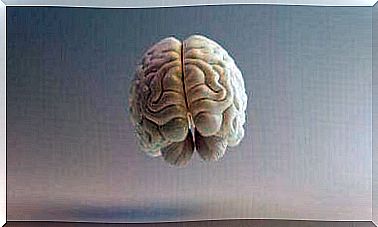Integrated Psychological Therapy For Schizophrenia

Nowadays, schizophrenia is treated by following different modalities of psychological intervention, including Integrated Psychological Therapy for schizophrenia.
Gone are the days when the pessimistic and organist vision of psychiatry, represented by Kraepelin, dominated; or the psychoanalytic view, which considered schizophrenia a form of dementia, that is, a narcissistic neurosis in which transfer and analytic treatment could not be applied.
There has been a shift in therapeutic focus. While initially focusing only on treating the schizophrenic patient’s inability or rehabilitating cognitive impairment, now there are therapies that treat the actual symptoms.
One of these is Integrated Psychological Therapy for Schizophrenia, developed by Roder and Brenner.
Starting from the assumption that schizophrenics show deficits at different functional levels of organization of behavior (perceptual-attentive, cognitive, micro and macrosocial), and that they can harm others, because they are connected by a hierarchical system, Brenner and his collaborators have developed the so-called pervasiveness model.
This is the basis for explaining schizophrenic symptoms and for developing Integrated Psychological Therapy (IPT), starting from the assumption that cognitive improvements lead to behavioral improvements.

Characteristics of Integrated Psychological Therapy for Schizophrenia
It is a group rehabilitation intervention, with groups composed of 5-7 patients, developed specifically for this type of disorder. The goal of therapy is to improve the cognitive and social skills of schizophrenic patients. It consists of three weekly sessions of 30-60 minutes for a total duration of 3 months.
The patient deemed suitable for this type of treatment is a person aged between 18 and 40 years. The patient must not consume drugs continuously (sporadically), must live with his family, must not have been hospitalized for long periods, and must have mild or moderate frontal executive deficit.
Structure of the IPT model
Integrated psychological therapy for schizophrenia is divided into 5 sub-programs, designed to improve the cognitive disorders and social and behavioral deficits characteristic of the disorder.
The sub-programs are arranged in a hierarchical way: the first interventions are directed to the training of basic cognitive skills, then we work on cognitive skills in verbal and social responses, finally we educate the patient to solve more complex interpersonal problems.
Each subprogram is designed in such a way that as therapy progresses, the patient’s level of need gradually increases. We proceed from simple and predictable tasks to difficult and complex situations.
At the same time, the therapy undergoes a destructuring process, in which the initial sessions are very structured while at the end they are much more spontaneous.
Furthermore, each sub-program begins with an emotionally neutral material, which is acquiring an ever greater emotional load.
Integrated Psychological Therapy Subprograms
The different sub-programs that define Integrated Psychological Therapy for schizophrenia can be summarized as follows:
1. Cognitive differentiation
The focus is on attention skills and concept formation (attentional, cognitive and memory skills). To put this subprogram into practice, intervention techniques such as card categorization and variable concept exercises are used, such as synonyms and antonyms, the definition of words or the identification of an object.
2. Social perception
The objective of this sub-program is the analysis of social stimuli. For this, we use the description of social stimuli, the interpretation of these stimuli and the discussion about the meaning of the situation described.
3. Verbal communication
Patients are trained in conversational skills, including literal repetition of sentences, paraphrasing, elaborating answered questions, questions related to a predefined topic, and free conversation.
4. Social skills
In this sub-program, therapy focuses on improving social skills, a necessary aspect in schizophrenic patients. This part of Integrated Psychological Therapy includes role play exercises in simulated situations.
5. Solving interpersonal problems
In this last phase of Integrated Psychological Therapy, the patient is taught to apply the problem-solving technique to the sphere of personal relationships. The techniques used are:
- Problem identification and description
- Formulation of alternative hypotheses
- Evaluation of alternative solutions (advantages and disadvantages)
- Choice of the best solution
- Application of the chosen solution to real life
- Evaluation of the results

Effects of Integrated Psychological Therapy
The data available so far cannot confirm the hypothesis of pervasiveness, on which Integrated Psychological Therapy for schizophrenia is based. Effects on cognitive variables do not always translate into behavioral improvements.
It is possible that other factors, such as self-image, interfere and inhibit the pattern of pervasiveness. However, in other studies carried out by the same authors, an effect of the inverse application of the IPT model has been shown.
In other words, if you start from a social rehabilitation path, you can observe a stronger descending effect in improving basic cognitive functions, activating problem management skills, developing non-impaired cognitive processes and improving self-concept.
A training program aimed at leisure, daily life and work activities was also developed to facilitate the generalization of skills acquired during therapy.
Finally, a situation management oriented sub-program was added, based on psycho-educational programs, with the aim of correcting the ways in which the schizophrenic patient faces the different situations in life.









